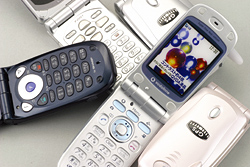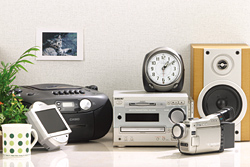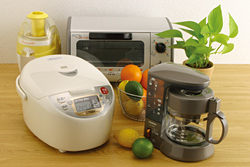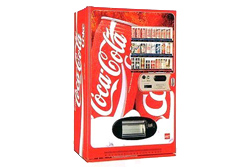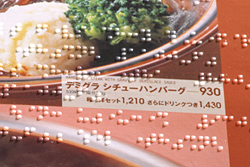WHAT IS SCREEN PRINTING ?
1.Theory
There are 4 types in printing; letterpress, lithography, intaglio and stencil. Stencil is used for screen printing just like mimeograph.
Mesh(=screen) made of fabrics such as polyester is used for stencil. Screen is stretched and fixed to the frame. Resist is coated on the screen to fill up the meshes that are not necessary. Ink goes through the unfilled meshes and are transferred to the substrate.
2.History
The roots of screen printing are said to lie in Japanese traditional dyeing called Yuzen. This was introduced to Europe and America. Some improvements and developments were made to this dyeing technique mainly in America. Japan began to produce stencil-making equipments and printing machines by the influences of what were made in U.S.A. after the World War II. That stimulates screen printing industry in Japan. The stencil-making technique made progress in latter half of 1945, which made it possible to print fine patterns. The range of applications was widened as well.
JUJO CHEMICAL CO., LTD. has been engaging in development of screen printing ink ever since its establishment in 1957. The inks designed for various applications such as paper, plastics, metal or fabric have been introduced to the market. UV ink and water-based ink were put into practical use in 1970. The demand for UV inks, which are environmentally friendly, has been making remarkable growth recently.
3.Characteristics of screen printing
Merits
- Screen printing makes it possible to print on wide range of substrates.
- Screen printing makes it possible to print on the substrates with various shapes and sizes.
- Many kinds of ink are available.
- Thick coating is possible. (General stencil: 10-30 microns, Special stencil: more than 100 microns)
- Thick coating makes colors more vivid, finish more opaque and lightfastness better.
- As printing pressure is small, it is possible to print on fragile matters.
- As the stencil is soft, it is possible to print on hard materials such as glass and metal as well as soft materials such as paper and fabrics.
- The stencil is cheap, which is the advantage in case of production of small quantity.
Demerits
- Plate wear and printing speed are inferior to other ways of printing. Production cost is higher.
- Reproducibility and precision are slightly inferior to other ways of printing.
4.Applications
Screen printing are being used for various substrates in various fields. Ink does not adhere to some kinds of substrates with other printing methods. Screen printing can be used on some of these substrates.
- Commercial applications:
Posters, billboards, POP, displays, stickers, signs, flags - Daily necessaries:
Toys, stationery, sports goods, bags, T-shirts, cosmetic containers, toiletry containers, packages, wooden products, glass, ceramics. - . Industrial applications:
Automobile meters, CDs, parts of electric appliances, membrane switches, liquid crystal display, automatic vendors, name plates, print circuit boards, thick ICs.



